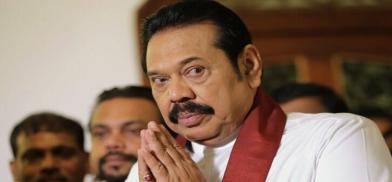Sri Lankan Prime Minister Mahinda Rajapaksa finally resigns as turmoil grows after clashes
Mahinda Rajapaksa’s supporters, armed with sticks and rods, attacked the peaceful protestors camping outside his official residence. This is the first time in the over a month-long protest that the clashes broke out between government supporters and protestors. Videos on social media showed Rajapaksa supporters beating and assaulting some of the protestors, and vandalizing the tents erected at the site

Amid a severe economic crisis and growing protests, Sri Lankan Prime Minister Mahinda Rajapaksa finally resigned from his position on Monday, hours after his supporters attacked and clashed with the anti-government protestors in the capital Colombo.
The resignation came after he faced all-around condemnation for the violence caused by his supporters, who had met him earlier today. Protestors, who are camping in front of the Presidential Secretariat in the capital’s iconic Galle Face, have long been demanding the resignation of the Rajapaksa duo.
Two of his cabinet ministers also resigned after his resignation today.
Once considered the strong man of the island’s politics, Mahinda, 76, had served as prime minister between 2004-2005, and then as president for ten long years between 2005-2015. Later, in 2018, he briefly served again as prime minister. Earlier this year, the government lost public confidence after the country plunged into what many say is the country’s worst economic crisis since its independence in 1948. The government, for weeks, has been under pressure, in the wake of growing protests and dwindling forex, which came down below $25 million.
On Sunday, the president had held a cabinet meeting, where he had reportedly asked Mahinda Rajapaksa to resign in a bid to pave way for the formation of an interim government with the support of all political parties. A day later on Monday, he resigned, less than three years after his party and allies secured a two-thirds parliamentary majority. His legacy of ending the country's three-decade-long civil war by annihilating the separatist Tamil Tigers in 2009, which had made him a larger-than-life figure, especially among the country's majority Sinhala Buddhists, now stands seriously diminished, as the country stands on the verge of economic bankruptcy, with millions of its citizens staring at an uncertain future. Despite his resignation following the intense clashes, the protests have been growing in Sri Lanka, with people intensifying their demand for the resignation of President Gotabaya Rajapaksa.
Following clashes earlier on Monday, the country has been put under a nationwide curfew and the government has deployed the army in the parts of the capital, including in Galle Face, the city’s iconic place, now the epicenter of the anti-government protest.
Mahinda Rajapaksa’s supporters, armed with sticks and rods, attacked the peaceful protestors camping outside his official residence. This is the first time in the over a month-long protest that the clashes broke out between government supporters and protestors. Videos on social media showed Rajapaksa supporters beating and assaulting some of the protestors, and vandalizing the tents erected at the site.
In a tweet, President Gotabaya Rajapaksa said, “Strongly condemn the violent acts taking place by those inciting & participating, irrespective of political allegiances. Violence won’t solve the current problems.” He further urged people to “remain calm & exercise restraint” to find the solution to the crisis.
(SAM)








Post a Comment